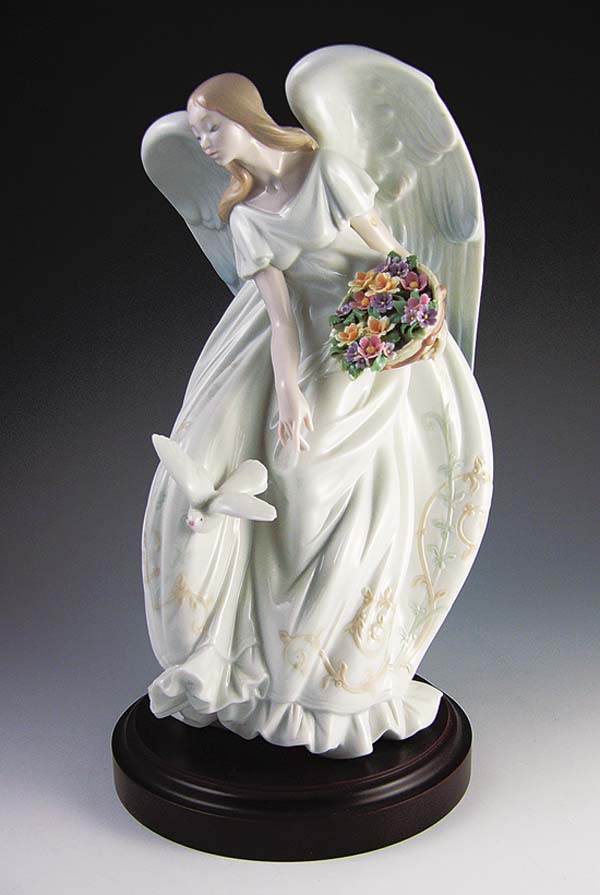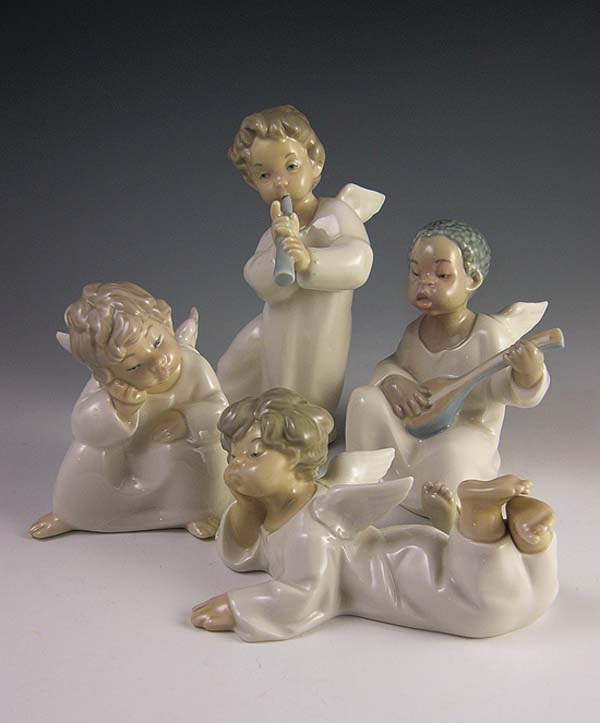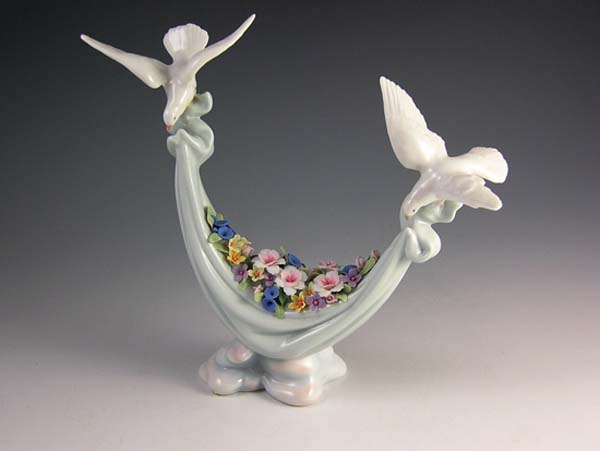Lladr: The Peak Of Porcelain Perfection Smack Dab In The Middle: Design Trends Of The Mid-20th Century
By Donald-Brian Johnson - December 06, 2024
Looking to spruce up your home dcor? Sure! Like lots of choices? Of course you do! Well then, how about adding a porcelain figurine by Lladr? A recent check totted up over 38,000 of them on eBay. While sometimes derided for a sameness in style, its that very sameness or, more accurately, consistency that accounts for Lladrs global appeal. The themes are universal. The styling and execution are top-of-the-line. The figures radiate peacefulness. Plus, their neutral expressions allow viewer participation, providing individual interpretations of what each porcelain character is experiencing. Lladr began with the talents of three brothers, Jun, Jos, and Vicente Lladr. Born pre-WWII, the trio hailed from the small rural village of Alamssera, near Valencia, Spain. Trained in the San Carlos de Valencia School of Arts and Crafts and the Valencian Tileworks, their earliest pieces date from the 1940s. However, it wasnt until 1953, using a self-built kiln on their parents patio, that the brothers founded Lladr Porcelain. Jun and Jos were the artists, Vicente the sculptor. A vote of all three determined if a proposed design would go forward. Early European popularity meant a move to larger quarters, and when Lladr entered the United States market in 1965, business boomed. With the 1969 opening of the City of Porcelain, the companys combination factory/museum in Tavernes Blanques, Spain, Lladr had most definitely arrived. The appeal? Well, as fans of such legendary names as Meissen, Sevres, and Royal Doulton will attest, people like porcelain. With roots in 7th century China, porcelain is a paste mix of clay, water, and assorted secret ingredients, molded and fired in a durable form. So secret were those ingredients that, in early China and Europe, the formula was passed down through family lineage (In some cases, spilling the beans meant certain death). Lladr capitalized on buyers hunger for new porcelain pieces made with the same care, skill, and imagination as those of the past. Joining the brothers as the firm grew were such talented sculptors as Salvador Furi, Fulgencio Garci, and Juan Herta, along with a support staff of artisans numbering in the thousands. Many were needed, as the work involved in creating a Lladr piece is mind-boggling. Following initial design, the figurine parts are molded separately, usually requiring 15-20 molds. (Topping the list: a masterwork like the 18th Century Coach, which took 350 molds, and eventually sold at auction for $31,000.) The separate pieces are then smoothed, joined, painted, glazed (if called for), and fired. The result: porcelain perfection. But technical accomplishment by itself isnt enough. What really draws collectors is that almost every piece of Lladr tells a story. The titles can be simple statements (First Ballet, as two young dancers prepare for a recital). They can comment on the character (Mile of Style, as a tattered circus clown strikes an elegant pose). Or, most often, they can tug at the heartstrings (Please Come Home, as forlorn puppies wait by a window). The scenes are ones folks can identify with, and the sources are many: children, romantic duos, domestic day-to-day activities, religious and inspirational themes, and even depictions of theatrical and literary luminaries. While most are in the unhurried poses and restful pastels Lladr is known for, there are always exceptions. Rearing horses and leaping gazelles are on hand to provide the movement Lladr refers to as dynamism. Darker, richer colors are used for effect, particularly in the terra-cotta line of Gres figurines. Lladr prices are no longer uniformly stratospheric (there are, after all, those 38,000 on the secondary market and that is just eBay). Small figurines often resell for under $25, average-size figurines between $75-$150. However, the larger and more detailed the piece, the higher the price, starting in the low thousands, then up (and up and up). A company publication once pinpointed the two most important ingredients that go into a Lladr creation: Simplicity. And love. Just what every home needs more of. Photo Associate: Hank Kuhlmann. All photos by Donald-Brian Johnson. Donald-Brian Johnson is the co-author of numerous Schiffer books on design and collectibles, including Postwar Pop, a collection of his columns. Please address inquiries to: donaldbrian@msn.com.











SHARE
PRINT